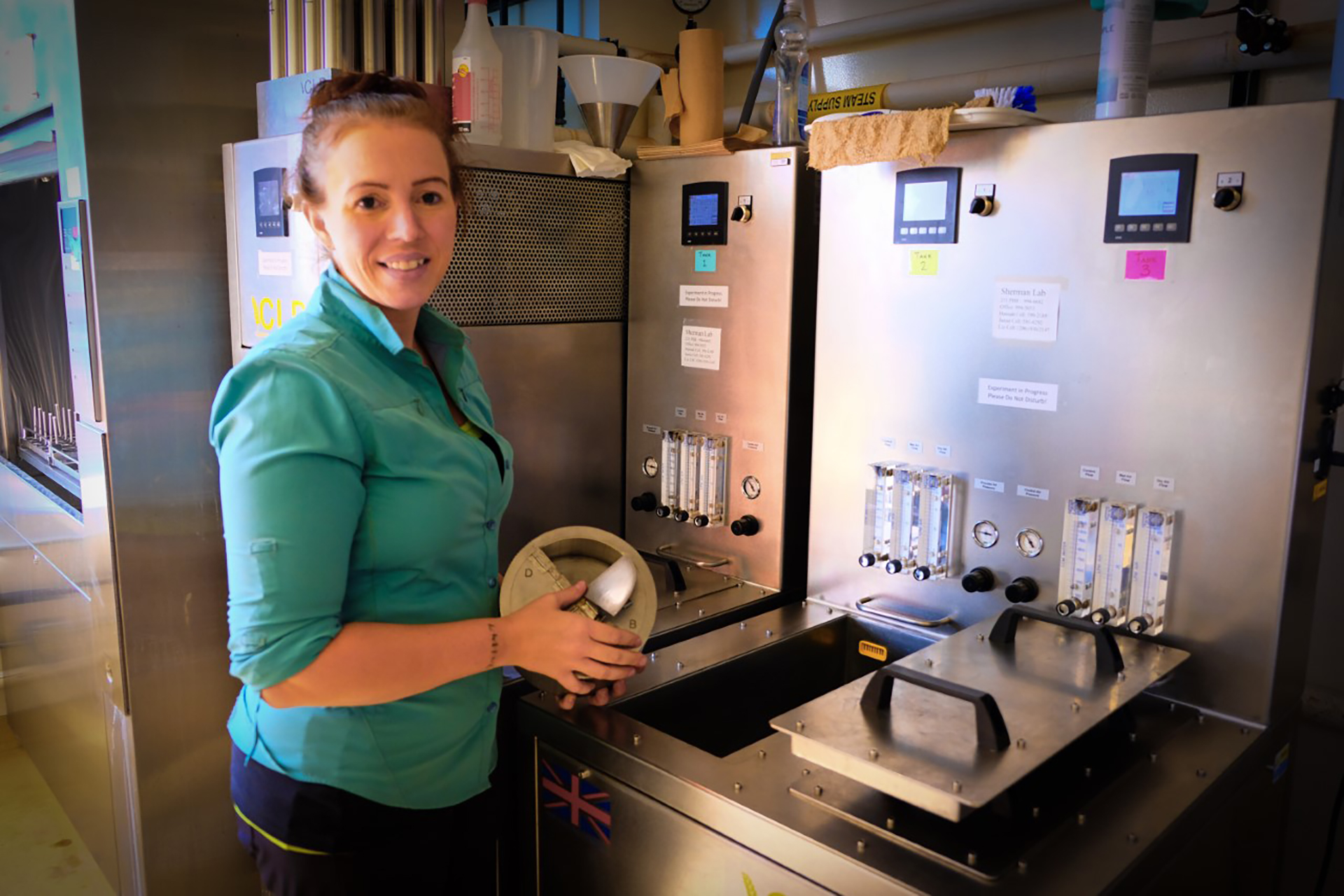By Meghan Howes, Contributing Writer for RadCraft

Hannah Turner wears numerous hats as Director of Montana State University’s Barley, Malt & Brewing Quality Lab. Each workday varies, though her tasks have changed considerably from when she first came to MSU in 2006. “Early on a typical day meant getting the analyzer started, getting things milled. I’d run the analysis then move to data entry.”
Now that she has an assistant to help with these tasks, Turner has more time to support the outreach efforts of the Quality Lab. As a Craft Maltsters Guild board member, she heads up the Guild’s Technical Working Group and educational programs; Turner co-teaches the Guild’s Advanced Course in Craft Malting Production and developed the curriculum for the Malt for Brewers Workshop the Guild hosted alongside MSU back in August. She’s also the main contact for program tours, which include peeks in the quality lab and its state-of-the-art equipment. Turner leads 25-30 tours annually. “Growers, maltsters, brewers…all of them come through. We talk about the breeding program, flavor, and much more.” For those who wish to dive even further, the lab hosts Field Days each summer, usually in July.
“I would love to see more brewers there,” said Turner. “Largely the days are about the research we’re doing – we have seven research stations all over the state.” Field days provide an opportunity for MSU to showcase various research within the program, such as the breeding programs and cropping systems. “This year we presented research on the impact of amino acid variation on flavor and root and microbiome structure for barley drought tolerance”. More and more farmers are joining in on these field days as well. “We welcome anyone who wants to come,” adds Turner.

“The barley breeding program has been around for decades upon decades,” said Turner, “but Dr. Jamie Sherman started as our breeder in 2015, and the lab as it is now started in 2016.” Before Turner came on board, the main focus was on genetics and agronomics, but soon added malt quality, more food testing, and forage analysis. “There are lots of end uses for barley,” said Turner.
Approximately 80% of all barley grown in Montana is dryland farmed, with little to no supplemental water. “Farmers in Montana have been contracting to grow barley for a long time,” said Turner. The MSU lab helps those farmers by breeding for varieties that are more environmentally stable.
“Value-added malt” is a phrase often uttered amongst farmers and maltsters. But what does this mean, exactly? “For many growers in Montana, they had a stable contract and then a situation would come up where the contract would get cut,” explains Turner. “So the ‘value-added’ part is giving the farmer stability to not have to sell the grain on the commodity market. This makes it so that [the growers] are depending more on their own abilities and have greater control over their crops.”
The MSU lab is a strong proponent of getting out into the field and working directly with growers. “Knowledge of agriculture is as important as lab work,” said Turner. She continues, “Unlike wine, where seasonal change is celebrated, brewers are expected to be consistent.”
Turner and her staff put barley malt through its paces, undergoing extensive variety trials within grain families. Variety trial results are then posted on the program’s website for all to access. The extensive resources available through the MSU lab are helping to educate growers, maltsters, and brewers all across North America. But as Turner’s boss, Dr. Sherman, who will be profiled next in this series mentioned, “We’ve only scratched the surface [of this research], and that’s fun because it means we have a lot of work to do.”
Learn more about the testing services and resources the MSU Barley, Malt & Brewing Quality Lab provides on their website and follow them on Facebook, Instagram, and Twitter.



You must be logged in to post a comment.